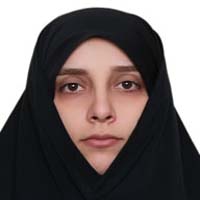Lighting's Role for Children's Presence in Public Parks (Case Study: Fadak Park in Tehran)
Author(s):
Abstract:
Children are amongst the vulnerable strata of each society, as they are not capable of expressing their every need. Meanwhile understanding and paying attention to their desires is crucial and important for the future of both themselves and their society. Generally, childrens vital needs can be categorized as follows: 1. Physical care, that is a childs need for home, food, clothing, and stuffs like that; 2. Need for support, that is a childs need for support against hazards and difficulties; 3. Need for security, that is supporting the child and supervising his/her condition; 4. And emotional need, namely, the emotion and respect that a child needs in order to resist pressures. Therefore, security is one of the important needs of a child and an influential factor in the presence of him/her in public realms. The presence of children in public spaces can promote their physical and mental growth. Many of the psychologists believe that learning, in early childhood, is attained through free playing. Although there is no exact definition for free playing, it can be characterized as acting unplanned, unpredictable, voluntarily, and full of joy. Designing appropriate playgrounds can increase the presence of children in such places. Studies indicate that places which are most desirable for children include their home, gardens, streets around the neighborhood, parks, playgrounds and sport fields. A playing area is a kind of dynamic urban space, which means it is located inside a park or another public place and is not private; in such places the social interactions between children happens at its highest level. Playing areas, as encourage independent functions, can create the context for generating diverse games (adventurous and group games, water and mud play, drawing, motion-physical games, playing with tools, drama and social games, playing with ball, science games, playing with moving objects like bicycles, tricycles, and wagons, playing with natural elements, and
) appropriate for the age ranged from 1 to 6 at playgrounds in neighborhoods, and for the age range of to 6 to 15 at playgrounds in urban areas. According to Lynch, children learn more outside the school and in society. In his view, this kind of education is being lost in our cities. Schools environments cannot completely quench childrens needs for various activities. Because, regrettably, in schooling tradition of Iranians, the childrens activities are dominated by the school in such a specific way that no free playing is recognized appropriate for them. All activities which are done in schools, if any, are not free and are temporally limited. Child care centers in urban areas, despite their spatial restrictions, can host children for 2 or 3 years. Today, one of the main purposes of day care centers is to take care of children and educate them, and due to their limited spaces and facilities, less time is spent on free playing. Therefore, to deal with this important issue, we have investigated the effect of lighting in play spaces on the presence of children in such areas. For this purpose, a case has been studied and an observation-based qualitative-quantitative method has been used. By interviewing about the presence of children and the factors affecting it, Fadak Park, located in the Municipality No. 8 of Tehran, has been examined. To do this, a documentary research approach were applied along with observational method and depth interviews. Then, 18 children were interviewed and to complete the research, also their parents were interviewed. Based on the theoretical saturation viewpoint, to prevent repetitive data, we limited the interview to 18 people and samples were selected randomly. To investigate the effects of lighting, we observed the Park on Sunday (uncrowded day) and Friday (crowded day) twice (once in the morning, and another time in the afternoon). Investigations show that one of the places in which learning can happen for children, are the public realms. Childrens learning in unofficial places increases due to the freedom of choice and discretion. Children can freely play in these areas and can be connected with their peers, with no temporal restriction. Thus, the presence of children in public areas, particularly in playgrounds, is of great importance, because they can interact with other children and play freely. On the other hand, the fear factor and night-time safety, are two influential elements which can decrease the presence of children in public spaces at night. Regarding the limitations and shortage of playgrounds for children, these areas must be altered to meet childrens needs. As the results of our investigations show, appropriate lighting can build a sense of security and safety in children and their parents, and subsequently result in an increased public presence and sociability.
Keywords:
Children , Child , friendly City , Lighting , Playground , Presence
Language:
Persian
Published:
Journal of Architect, Urban Design & Urban Planning, Volume:8 Issue: 15, 2016
Page:
145
magiran.com/p1527301
دانلود و مطالعه متن این مقاله با یکی از روشهای زیر امکان پذیر است:
اشتراک شخصی
با عضویت و پرداخت آنلاین حق اشتراک یکساله به مبلغ 1,390,000ريال میتوانید 70 عنوان مطلب دانلود کنید!
اشتراک سازمانی
به کتابخانه دانشگاه یا محل کار خود پیشنهاد کنید تا اشتراک سازمانی این پایگاه را برای دسترسی نامحدود همه کاربران به متن مطالب تهیه نمایند!
توجه!
- حق عضویت دریافتی صرف حمایت از نشریات عضو و نگهداری، تکمیل و توسعه مگیران میشود.
- پرداخت حق اشتراک و دانلود مقالات اجازه بازنشر آن در سایر رسانههای چاپی و دیجیتال را به کاربر نمیدهد.
In order to view content subscription is required
Personal subscription
Subscribe magiran.com for 70 € euros via PayPal and download 70 articles during a year.
Organization subscription
Please contact us to subscribe your university or library for unlimited access!



